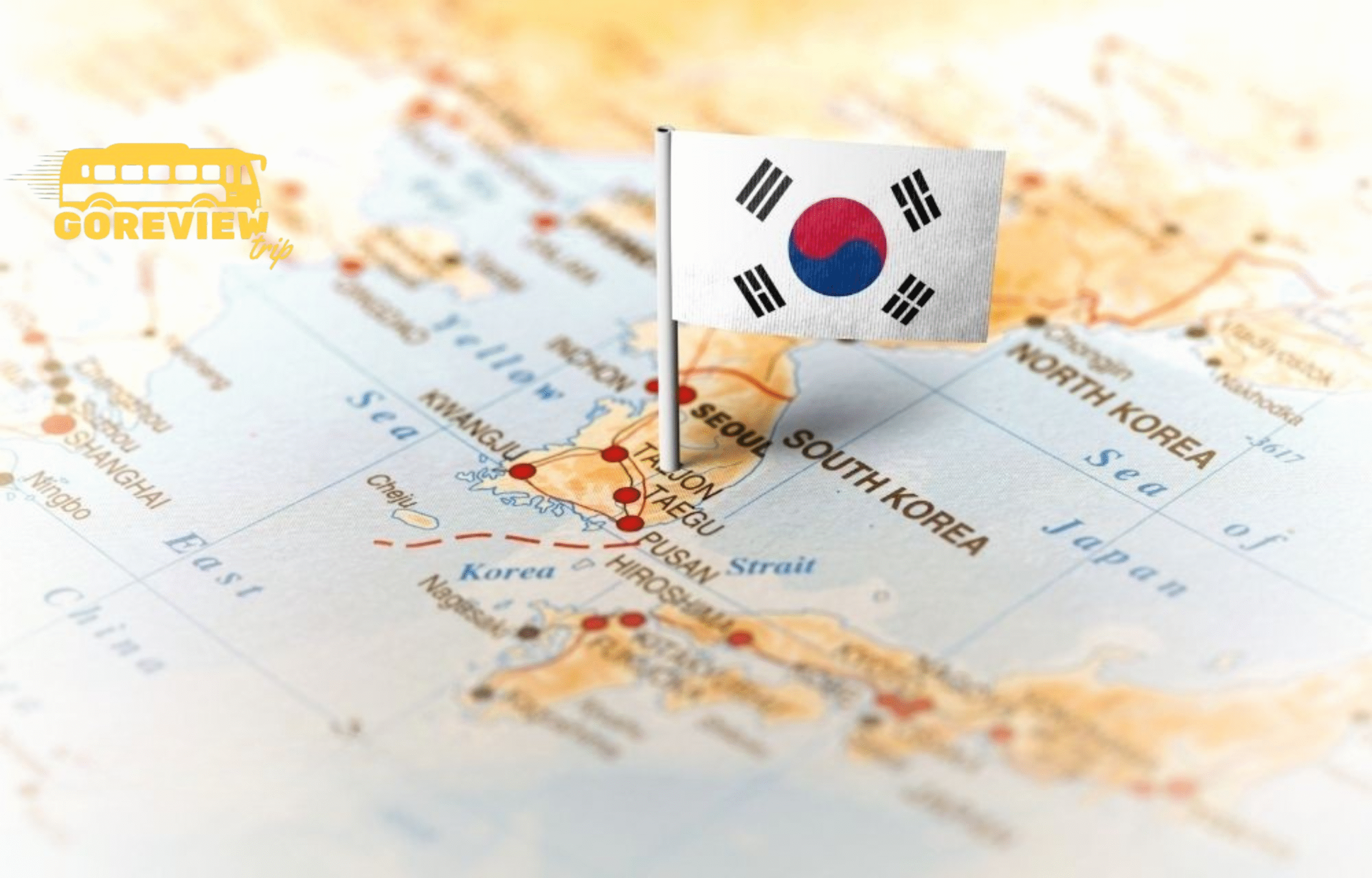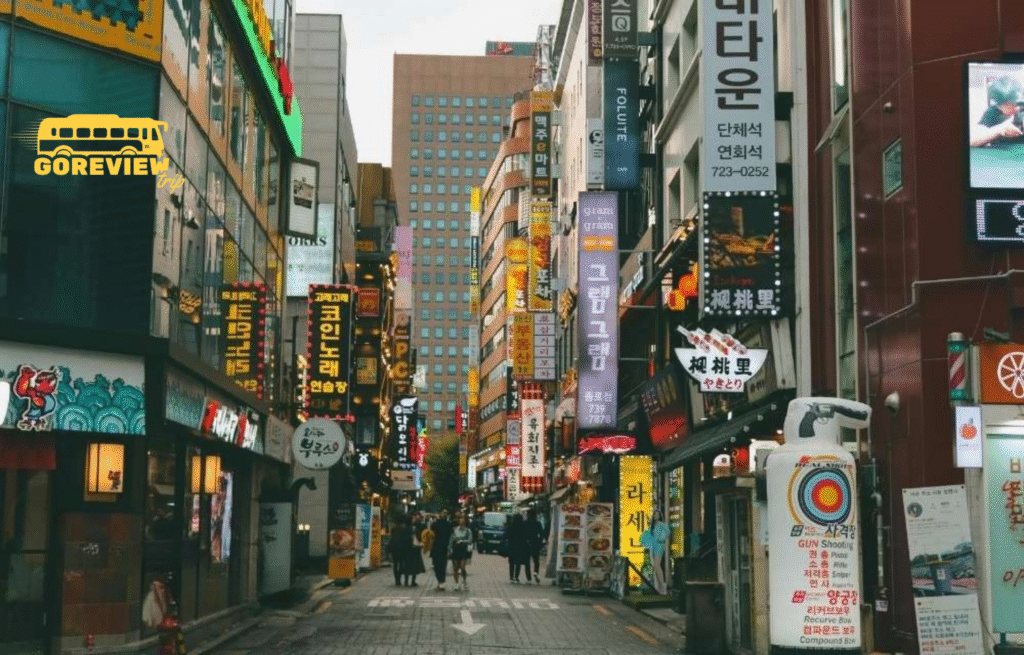Hey there, fellow adventurer! It’s Lyra.
Close your eyes for a second. Picture it: you’re standing in the heart of Seoul. The scent of sizzling Korean barbecue hangs in the air, K-pop melodies drift from stylish storefronts, and ancient palace gates stand proudly against a backdrop of glittering, futuristic skyscrapers. You’ve been dreaming of this trip for ages, fueled by captivating K-dramas, a deep desire to see the cherry blossoms paint the city pink, and an insatiable craving for authentic kimchi.
Let’s call this dreamer “Jenna.” Jenna’s itinerary is a masterpiece. She’s planned a hike in Bukhansan National Park to see the city from above, a foodie pilgrimage through Gwangjang Market, a reflective visit to Gyeongbokgung Palace, and maybe even a quick trip to the vibrant shores of Busan. She’s booked her flights, reserved the perfect little guesthouse in Hongdae, and her suitcase is practically packed.
But as she’s about to close her laptop, a little thought, a tiny “what if,” whispers in her mind. What if she twists an ankle on that hike? What if she gets a nasty case of food poisoning? What if a family emergency back home means she has to cancel the whole thing? Suddenly, the glittering dream feels just a little bit fragile. That’s when she types a question into her search bar, the very same one that probably brought you here: “Travel insurance for South Korea.”
 9383
9383
If you’re like Jenna, you might be wondering if it’s just another box-ticking exercise, another expense on an already expensive trip. Well, I’m here to tell you, through stories and practical advice, why travel insurance is the single most important thing you can pack for your South Korean adventure. It’s not about planning for disaster; it’s about buying the freedom to be completely present in your dream trip, knowing you’re protected.
So, let’s unpack this together. We’ll explore what you need, why you need it, and how it can turn a potential catastrophe into a mere inconvenience.
Table of Contents
- 1 The Big Question: Is Travel Insurance for South Korea Really Necessary?
- 2 Decoding Your Shield: The Non-Negotiable Components of Your Policy
- 3 A Story in Action: Navigating a Real Emergency
- 4 Lyra’s Guide to Choosing Your Policy
- 5 Frequently Asked Questions (The Stuff You’re Still Wondering)
- 6 Your Passport to Peace of Mind
The Big Question: Is Travel Insurance for South Korea Really Necessary?
Let’s get the technicality out of the way first. As of my latest check in August 2025, the South Korean government does not legally mandate that you have travel insurance to enter the country. For many nationalities, the K-ETA (Korea Electronic Travel Authorization) is even temporarily waived. So, no, an immigration officer likely won’t ask to see your policy documents upon arrival.
But this is one of those times when the legal minimum is not the smart maximum. Thinking you don’t need insurance for South Korea because it’s a “safe” country is like thinking you don’t need a seatbelt because you’re a “good” driver. It misses the point entirely.
South Korea is, without a doubt, one of the safest, most modern, and technologically advanced countries in the world. The tap water is drinkable, the streets are clean, and violent crime is incredibly rare. But safety doesn’t mean invincibility. The biggest risks to your trip aren’t the ones you see in action movies; they are the mundane, unpredictable twists of fate that can happen anywhere.
A Story from the Real World: The Medical Crisis
To understand why “just in case” is so important, we only need to look at recent history. In 2024 and into 2025, South Korea faced a significant medical crisis, with thousands of resident doctors resigning in protest over government plans to change medical school admissions. This led to extended wait times at major hospitals and a significant strain on the healthcare system.
Imagine arriving in Seoul during that period, developing a high fever and severe stomach pains. You call for help and are taken to a world-class hospital, but it’s overwhelmed. There are long waits, stressed staff, and a level of chaos you didn’t expect. Now, on top of feeling sick and scared in a foreign country, imagine having to navigate that system alone, with the terrifying thought of a massive, unpayable bill looming over you.
This real-life scenario highlights a crucial truth: even the best systems can face unexpected pressures. And it’s in those moments that travel insurance transforms from a piece of paper into your personal crisis management team.
South Korea’s healthcare is top-notch, but it comes at a price, especially for tourists. A simple emergency room visit can run into hundreds of dollars, while a more serious incident requiring surgery or a multi-day hospital stay can quickly skyrocket into the tens of thousands. Without insurance, you are 100% liable for that entire bill. With insurance, you have a financial shield and a 24/7 support line to help you handle the logistics. The choice is clear.

Decoding Your Shield: The Non-Negotiable Components of Your Policy
Okay, so you’re convinced. But what does “good” travel insurance for South Korea actually look like? It’s not about finding the cheapest plan; it’s about finding the right plan. Let’s build the perfect policy for our friend Jenna’s dream trip.
1. The Million-Dollar Question: Emergency Medical & Evacuation
This is the absolute core of any travel insurance policy. It’s the main reason you’re buying it.
- The Scenario: Jenna is joyfully hiking a trail in Seoraksan National Park. The autumn leaves are stunning, the air is crisp. She steps on a loose rock, her ankle rolls, and she hears a sickening crack. She’s in immense pain, miles from a road. She needs immediate medical attention.
- What It Covers:
- Ambulance or Helicopter Rescue: Getting her off the mountain.
- Emergency Room Visit: X-rays, diagnosis, and initial treatment.
- Hospital Stay & Surgery: If the break is severe, she might need surgery and a few nights in the hospital.
- Medication: The cost of any prescribed painkillers or other medicines.
- Follow-up Appointments: Any necessary check-ups before she’s cleared to fly home.
- The ‘Evacuation’ Superpower: This part is critical. Medical Evacuation coverage handles the cost of getting you to the nearest suitable medical facility. More importantly, if your condition is serious, it can cover the astronomical cost of flying you back to your home country via a medically-equipped flight. Without insurance, this could cost more than a house. Look for a policy with at least $1,000,000 in medical coverage and a separate, generous amount (e.g., $500,000) for medical evacuation.
2. The Heartbreak Saver: Trip Cancellation, Interruption & Delays
You spend months planning and saving. The financial and emotional investment is huge. This coverage protects that investment.
- The Scenario (Cancellation): A week before her flight, Jenna’s father has a sudden, serious medical emergency and she needs to stay home to be with her family. Her flights and hotel bookings are all non-refundable.
- What It Covers: Trip Cancellation reimburses you for pre-paid, non-refundable costs if you have to cancel your trip for a covered reason (like the illness or death of a close family member, a natural disaster at your destination, or you yourself getting sick before you leave).
- The Scenario (Interruption): Jenna is two days into her Seoul adventure when she gets the same bad news from home. She has to cut her trip short and fly back immediately. She loses the money for the rest of her hotel stay and a pre-booked train ticket to Busan.
- What It Covers: Trip Interruption covers the unused portion of your trip and, crucially, can cover the often-exorbitant cost of a last-minute, one-way flight home.
- The Scenario (Delay): A typhoon in the East China Sea causes all flights to Incheon to be grounded for 48 hours. Jenna is stuck in a layover city and needs to pay for a hotel and meals.
- What It Covers: Trip Delay coverage provides a daily allowance for accommodation and essentials if your trip is delayed for a specified period (e.g., 6 or 12 hours).
3. The Lost Luggage Lifesaver: Baggage and Personal Belongings
This is one of the most common travel headaches. While not as life-altering as a medical emergency, it can ruin the start of your trip.
- The Scenario: Jenna lands at Incheon International Airport, excited to start her adventure. She waits at the baggage carousel. And waits. The carousel stops. Her suitcase, containing all her carefully chosen outfits and essentials, is gone. The airline says it could be days before they locate it, if at all.
- What It Covers:
- Baggage Delay: Provides a set amount of money to buy essential clothing and toiletries to tide you over until your bag arrives.
- Baggage Loss/Theft: If your bag is declared permanently lost or stolen, this coverage reimburses you for the value of its contents up to a specified limit.
Pay close attention to the per-item limits and the total limit. If you’re traveling with an expensive laptop, camera, and smartphone (very likely in tech-savvy Korea!), make sure your policy has adequate coverage for electronics.
4. The Adventurer’s Fine Print: Coverage for Activities
South Korea is an outdoor paradise. From hiking and skiing to cycling along rivers, there’s so much to do. But you need to ensure your insurance is as adventurous as you are.
- The Scenario: Jenna decides to go skiing for a day at one of the resorts near Pyeongchang. She’s a decent skier but takes a tumble and injures her knee.
- What You Need to Know: Many basic insurance policies exclude coverage for what they deem “adventure sports” or “extreme activities.” This can sometimes include seemingly innocuous activities like hiking at certain altitudes. Before you buy, read the policy wording carefully. If you plan on skiing, snowboarding, or even doing extensive hiking, you may need to purchase an add-on or choose a more comprehensive “Explorer” or “Adventurer” plan.

Let’s go back to our hiker, Jenna, with the broken ankle on the trail in Seoraksan. Let’s see how her story plays out with and without insurance.
Scenario A: Jenna Has No Insurance
- The Panic: Lying on the trail, her first thought after the pain is crippling fear. How much will this cost? How does she even call for help?
- The Bill: Someone helps her call 119 (the emergency number in Korea). She’s eventually taken to a hospital. Before they even perform surgery, they may ask for a massive upfront deposit or proof of ability to pay. She’s on the phone, crying, trying to explain the situation to her parents back home, who now have to figure out how to wire thousands of dollars.
- The Stress: Every decision is clouded by the financial burden. The entire experience is a trauma, not just physically but financially and emotionally. The dream trip has become a nightmare that will follow her home in the form of a mountain of debt.
Scenario B: Jenna Has Good Travel Insurance
- The Plan: After the initial shock and pain, she remembers she’s prepared. She knows what to do.
- The Call: Someone helps her call 119. She knows to use this number because it has a translator service for foreigners. As soon as she can, she (or a traveling companion) makes a second call: to her insurance provider’s 24/7 emergency assistance line.
- The Relief: This second call changes everything. The friendly, calm voice on the other end becomes her lifeline. They tell her not to worry about the cost. They contact the hospital directly to guarantee payment. They arrange for translators if needed. They check in on her condition. If her injury requires a special flight home, they coordinate all of it.
- The Recovery: Jenna can now focus on one thing: getting better. The financial stress is gone. The logistical nightmare is being handled by experts. Her dream trip was interrupted, but it wasn’t destroyed. She will go home with a cast on her leg, not a life-altering debt on her shoulders.
This, right here, is the true value of travel insurance for South Korea. It’s your personal logistics and financial support team in your pocket.
Lyra’s Guide to Choosing Your Policy
Navigating insurance websites can be daunting. Here are my personal tips for choosing the right shield for your adventure.
- Read the Fine Print (I’m Serious!): The devil is in the details. Understand the policy limits (the maximum amount they will pay out), the deductible (the amount you have to pay before the insurance kicks in), and the exclusions (what they absolutely will not cover).
- Be Honest About Your Health: If you have a pre-existing medical condition, you MUST declare it. Many policies won’t cover claims related to an undeclared condition. Some companies offer specific plans or add-ons to cover stable, pre-existing conditions. Honesty is crucial.
- Don’t Just Buy the Cheapest Plan: A super-cheap plan might have a crazy-high deductible or dangerously low medical coverage limits. It’s better to pay a little more for a policy from a reputable company that provides robust coverage. Value is more important than price.
- Check the COVID-19 Coverage: While the world has opened up, COVID is still a reality. Ensure your policy covers trip cancellation due to a positive test before you leave and medical expenses if you get sick while in Korea.
- Buy It as Soon as You Book: This is my number one tip. Your trip cancellation coverage begins the moment you buy your policy. If you wait until the week before your trip and a covered reason for cancellation pops up, you won’t be covered. Buy your insurance right after you book your flights and accommodation to get the maximum value from it.
Frequently Asked Questions (The Stuff You’re Still Wondering)
Q: How much does travel insurance for South Korea actually cost? A: It varies widely based on your age, your home country, the length of your trip, and the level of coverage you choose. For a typical two-week trip for a traveler in their 30s, you can expect to pay anywhere from $50 to $150 for a comprehensive plan. Think of it this way: it’s probably less than the cost of one night in a nice hotel.
Q: I heard the K-ETA is waived. Is that true? A: As of August 2025, yes, the K-ETA requirement has been temporarily lifted for citizens of many countries (including the US, UK, Canada, Australia, etc.) to boost tourism. However, these policies can change with little notice. ALWAYS check the official K-ETA website or your local Korean embassy’s website for the most up-to-date information before you travel.
Q: Can I just rely on my credit card’s travel insurance? A: Maybe, but be very careful. Credit card insurance is often far less comprehensive than a standalone policy. It might have very low medical coverage limits, no trip cancellation benefits, and lots of exclusions. It can be a decent secondary backup, but it’s rarely sufficient as your primary coverage. Read its terms very, very carefully.
Q: Is it too late to buy insurance if my trip is next week? A: Not at all! You can buy insurance right up until the day before you depart. Just remember that it won’t cover any issues you already know about (like a looming typhoon or a sick relative).
Your Passport to Peace of Mind
Let’s check back in on our friend Jenna. With her comprehensive travel insurance policy secured, she’s back to dreaming. The “what ifs” haven’t disappeared—life is always unpredictable—but they no longer have power over her. They are no longer a source of anxiety, just a manageable possibility she is fully prepared for.
She can now fully immerse herself in the magic of South Korea with confidence. She can savor every bite of tteokbokki, hike every trail, and sing her heart out at a noraebang (karaoke), knowing that her biggest worries are covered.
That is the ultimate goal. Travel insurance for South Korea isn’t about the destination; it’s about you. It’s an investment that protects your health, your finances, and most importantly, your peace of mind. It’s what allows you to trade anxiety for anticipation and truly make your dream trip a reality.
Have the most incredible, delicious, and safe adventure in South Korea!




